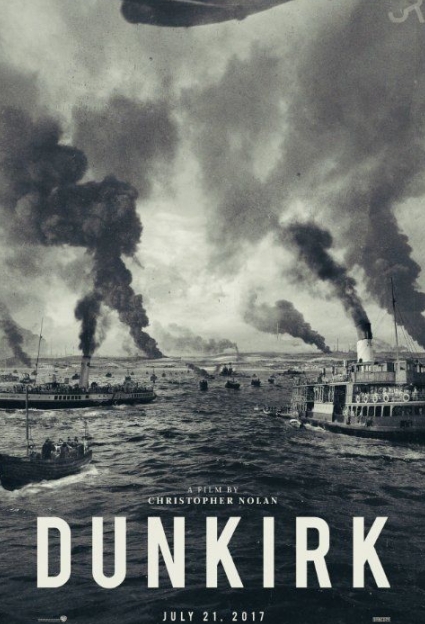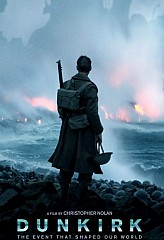Dunkirk: Nolan’s ascension to cinematic legends
Home > Visitor Columns

Behindwoods.com isn't responsible for the views expressed by the visitor in this column. The visitor claims that this column is his/her own. If the column infringes any copyrights that you hold, please email us at columns@behindwoods.com.
Cinema has long struggled to integrate the critically acclaimed art films which don’t attract huge crowds to theatres and money-driven popcorn flicks which critics loathe. The film industry is seemingly split between art and money. These two breeds of films differ in their budget, marketing strategy, release schedule, box office returns and in ambition. Indeed there are few exceptions. Steven Spielberg, Quentin Tarantino and Peter Jackson are some of the very few directors who have successfully unified the two. But none in the history of filmmaking is as skillful in marrying the two as Christopher Nolan.
With Dunkirk, Nolan is ten films old and he is yet to taste a failure. It is about the evacuation of Allied troops from the beaches of Dunkirk in France during World War II, exemplifies the skillful artistry that positions Nolan as one of the greatest auteurs of the 21st Century. The film is relentless, heart-pounding, emotional rollercoaster tale which is also thematically complex and structurally challenging. Nolan shows us awe-inspiring visceral images and horrors of war in equal measure. The film cautiously steers away from the usual war movie clichés. None of the characters were given a back story; no goodbye kisses in the railway station; nobody stares at a picture of their loved ones from their wallet; ranked officers doesn’t plot the course of action with maps; no limbs flying around; no blood and gore-fest that defined many war movies. To sum it up, it’s a war movie without a war.
Christopher Nolan, the writer-director-producer of Dunkirk, tells a simplistic story from three perspectives – the mole, which follows a week long struggle of Tommy’s desperate attempts to evacuate the beaches of Dunkirk; the sea, Mr.Dawson, a civilian’s heroic rescue mission in a day; the air, a courageous pilot’s one hour dogfight. These three tales overlap seamlessly throughout the movie and the way it all ties together in the climax is nothing sort of a miracle. Nolan’s obsession with nonlinear story-telling has come full circle.
Gorgeously shot with 70mm IMAX cameras, Nolan’s aversion to CGI in favor of practical effects is telling. Nolan drags us to Dunkirk from the very first scene and the action is breathless. We can feel every bomb being dropped, the claustrophobic sea water gasping our breath, every bullet whizzing past spitfire. Nolan and crew literally mounted a camera on the wings of a real plane to capture the aesthetic of sky and the aerial shots are jaw-dropping. As an ode to the silent films, very little is conveyed through dialogues. This is an experiential movie. Ironically, Dunkirk is the most immersive theatre experience one could ever have and it does it without the annoying 3D glasses. Much of this experience should be owed to the trio of wizards – Editor Lee Smith, Cinematographer Hoyte van Hoytema and Music Director Hans Zimmer.
After redefining the comic book genre, critics are praising that Nolan has redefined war movie with Dunkirk. But I would argue that Dunkirk cements Nolan’s place in history books for creating an entire new genre i.e. intelligent blockbusters – the successful marriage between art and entertainment; the Holy Grail that many a filmmaker couldn't crack. His films have an average rating of 85.2% (Rottentomatoes), 75.6% (Metacritic) and 8.38 (IMDb). Out of his 10, 7 films were in the top 65 movies of all time by IMDb. More significantly, all of those films are box office hits making him one of the few remaining celebrities who can legitimately open a movie on their own.
In this modern era, where an increasing number of studios prefer sequels, reboots and remakes over original scripts, Nolan’s success story induces hope to aspiring filmmakers to push the cinematic boundaries without insulting the movie-goers intellect.
Does Christopher Nolan belong in the same conversation as the greatest visionaries like Orson Wells, Akira Kurosawa, Alfred Hitchcock and Stanley Kubrick? The legion of Nolan fans for a long time, perhaps a little prematurely asked this question and gleefully answered a resounding ‘yes’. But after Dunkirk, film critics cannot ignore the fans anymore and by the critic’s reception, they are contemplating the legend of Christopher Nolan for the first time.
manocharles24@gmail.com
Please send your column to columns@behindwoods.com.

OTHER LATEST VISITOR COLUMNS
RELATED NEWS
- A biggest feat for Dunkirk!
- ''It was just like I was there again'' Dunkirk Battle Survivor talks about his experience
- ''How can a human think like this?'' - Karthick Naren on Dunkrirk
- Dunkirk - Behind the frames video
- Hot: Review on Christopher Nolan’s 'Dunkirk' is out. Check it!
- ''It will be one of the greatest stories in human history''- Christopher Nolan


